15 Animals with the Thickest Skin (With Pictures)

“Animals with the thickest skin” are characterized by remarkable adaptability and defense mechanisms that help them survive. Thick-skinned animals primarily use their skin to shield themselves from their surroundings.
Their enormous bodies require thick skin at times to keep them together. That being said, an animal’s skin thickness is not always correlated with its size. Furthermore, it’s common to think that having thick skin equates to having rough, insensitive skin. However, this isn’t always the case!
Explore the fascinating world of creatures with extraordinarily thick skin! This article presents 15 creatures that have thickened and evolved over time to survive and thrive in a variety of settings. Each animal has amazing dermal layers.
Animals with the Thickest Skin
African Elephant
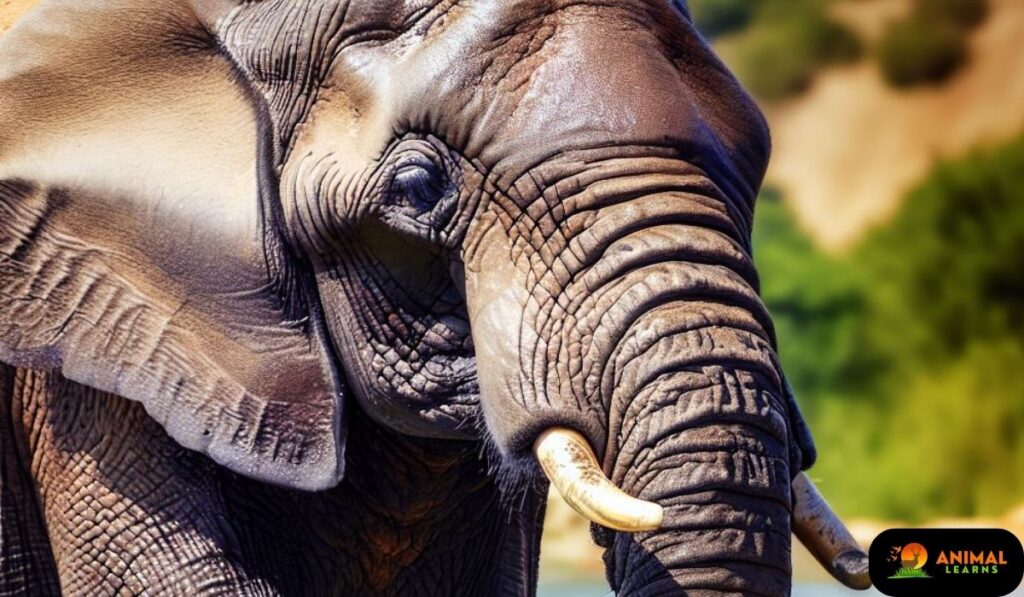
| Scientific Name | Elephas Maximus |
| Skin Thickness | Up to 1.5 inch |
| Type of Animal | Mammal |
| Where Found | Asia (Asian elephant) |
African and Asian elephants are recognized for their commanding stature and robust epidermis. This thick skin acts as a shield from the outdoors, keeping out things like sharp plants and strong sunlight.
In some parts of their body, elephants’ skin may be as thick as 1.5 inches. Their loose-fitting, wrinkled skin aids in holding their massive bulk together. Compared to flat skin, the creases and fissures in their skin help them retain ten times more moisture and debris. By doing this, they may stay cool and shield themselves from the light.
Their epidermis is likewise quite resilient. It is stronger and less prone to shedding because it contains more keratin, the substance that makes up our fingernails.
Indian Rhinoceros
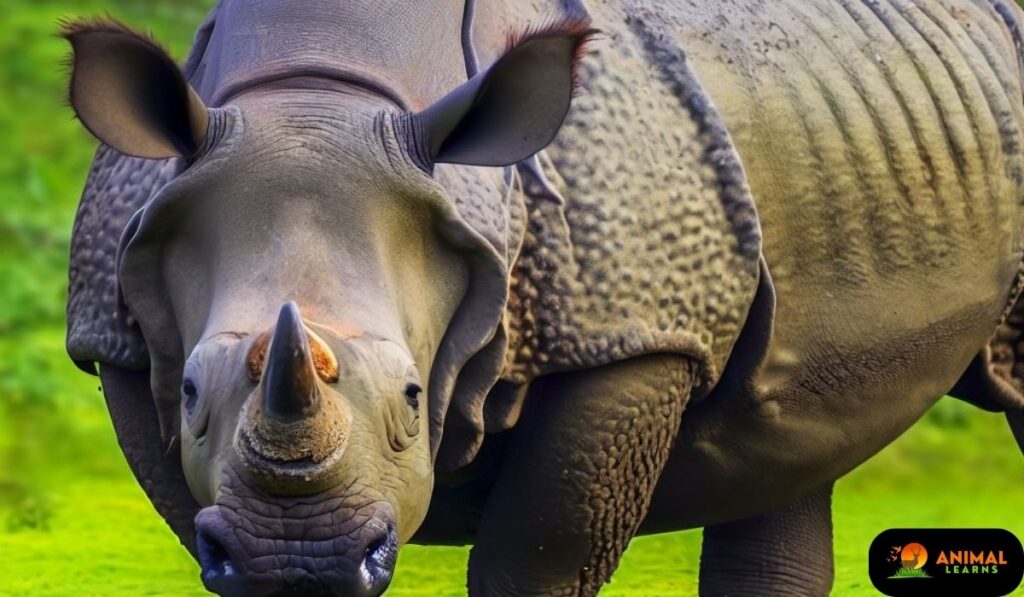
| Attribute | Information |
|---|---|
| Scientific Name | Rhinocerotidae family |
| Type of Animal | Mammal |
| Skin Thickness | Up to 2 inches |
| Where Found | Africa and Asia |
The thick, protective skin of rhinoceroses, sometimes referred to as rhinos, is what sets them apart from other animals. The folds in the skin resemble armor plating. For defense against predators and environmental dangers, this skin is vital. Made of keratin, the same substance as human hair and nails, rhinos are distinguished by their enormous size and characteristic horns.
Rhinos’ crisscrossed skin, which may be up to 2 inches thick, is composed of layers of collagen. Their thick skin aids in shielding them from any severe wounds or issues. Their skin is quite delicate, though, and they may burn from the sun very easily. Rhinos frequently roll in the mud to form a layer that shields them from the sun and insects after it dries.
Hippopotamus

| Attribute | Details |
|---|---|
| Scientific Name | Hippopotamus amphibius |
| Type of Animal | Mammal |
| Skin Thickness | Up to 2 inches |
| Where Found | Sub-Saharan Africa |
The skin of some hippos is up to 2 inches (5 cm) thick, which helps them stay protected from predators and the sun. Aside from their thick skin, hippos are excellent swimmers.
There are a lot of animals in Africa that love water, but the hippo is one of the most important ones. Its thick, smooth skin acts like armor and makes a special sunscreen. Hippos are very protective of their space and can be very angry if someone bothers them.
Their tough skin helps them fight back and stay safe in the water and on land. Also, it keeps them cool in the water and warm on land.
The absence of sweat glands on the epidermis of these animals is another intriguing feature. Rather, they cool themselves in their habitat’s dirt or water.
American Bison
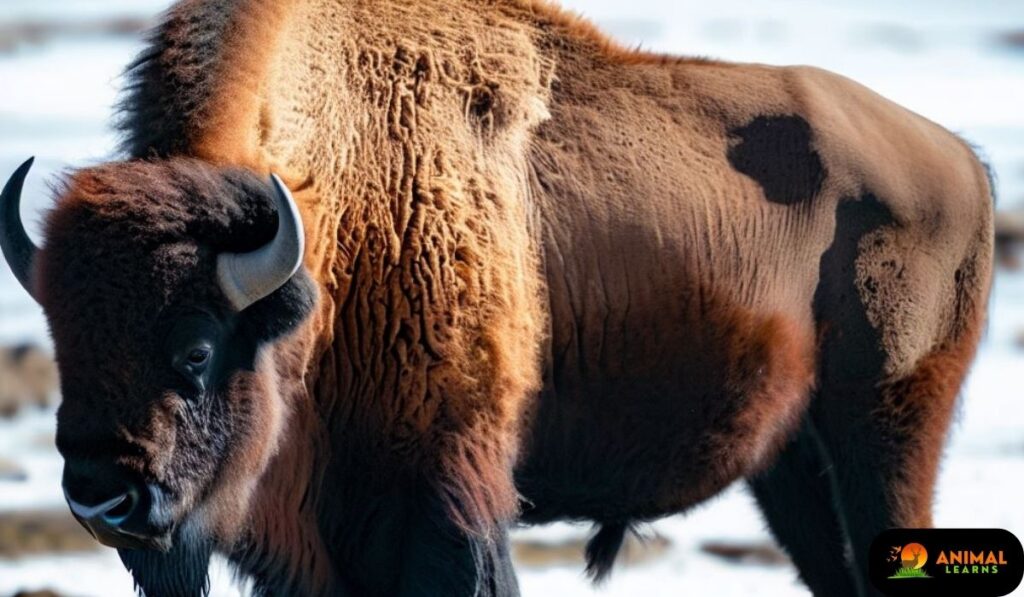
| Attribute | Information |
|---|---|
| Scientific Name | Bison bison |
| Type of Animal | Mammal |
| Skin Thickness | Up to 2 inches (5 cm) |
| Where Found | North America, primarily in the United States and Canada |
Mammals with the Thickest Skin like American bison, or buffalo, is a famous animal that lives in America. This bison has thick and furry hair that keeps it warm during the winter.
Its skin is tough and strong, so the bison is able to live in many different weather conditions and places, as well as protect itself from thorns and brushes. As well as being able to fight off small injuries, bison are also capable of surviving small animal or human injuries.
Walrus

| Attribute | Information |
|---|---|
| Scientific Name | Odobenus rosmarus |
| Type of Animal | Mammal |
| Skin Thickness | Up to 1.5 inches (3.8 cm) |
| Where Found | Arctic regions of the North Atlantic and North Pacific Oceans |
The distinctive features of walruses include their large tusks, whiskers, and enormous size. In order to stay warm in the icy seas of the Arctic, their fat coat and thick skin are essential. Walruses utilize their tusks for a variety of tasks, including escape from the sea, defense, and breaking through ice. Clams and other benthic invertebrates are their main source of food.
Walruses are gregarious creatures that are frequently seen in big herds on beaches or ice floes. They are crucial to the health of the Arctic’s marine ecosystems, but they are in danger due to climate change, especially the melting of sea ice. The main goals of conservation initiatives are to save their ecosystems and lessen the effects of global warming.
Manatee
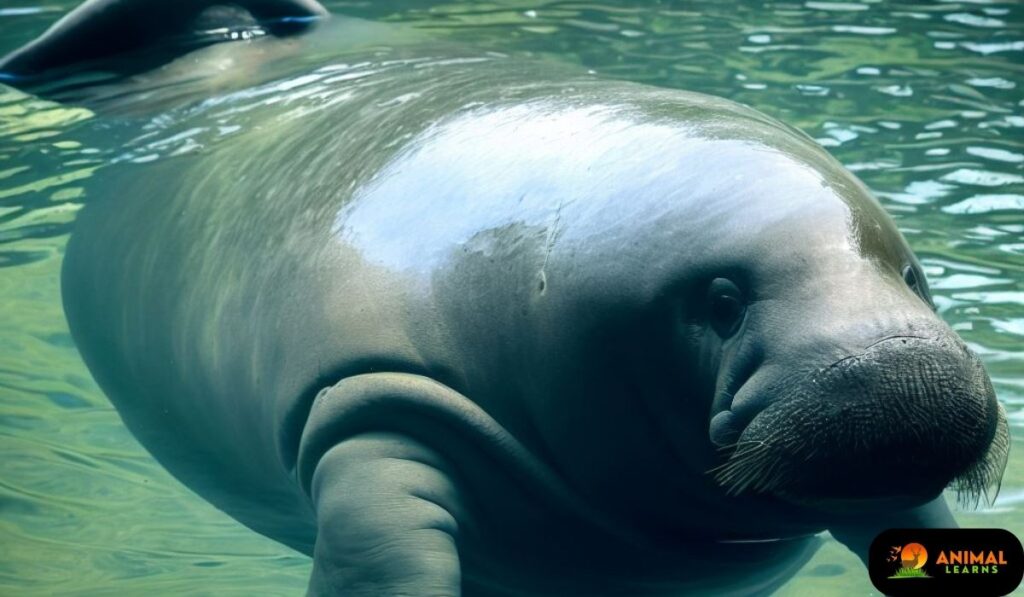
| Attribute | Information |
|---|---|
| Scientific Name | Trichechus manatus |
| Type of Animal | Mammal |
| Skin Thickness | Up to 2 inches (5 cm) |
| Where Found | Coastal areas of the southeastern United States, West Indies, and West Africa |
Large marine creatures that may reach lengths of nine to ten feet are known as manatees or sea cows. These creatures have thick, wrinkly, leathery skin, and their backs and tails are frequently covered with algae, giving them a brown or greenish appearance. The thick skin of manatees is an effective defense mechanism due to their sluggish movement.
To prevent algae and barnacles from building up on their bodies, their skin can peel continually. Additionally, they have bristly hairs on their skin that serve as sensors to aid in their surrounding’s navigation.
Armadillo
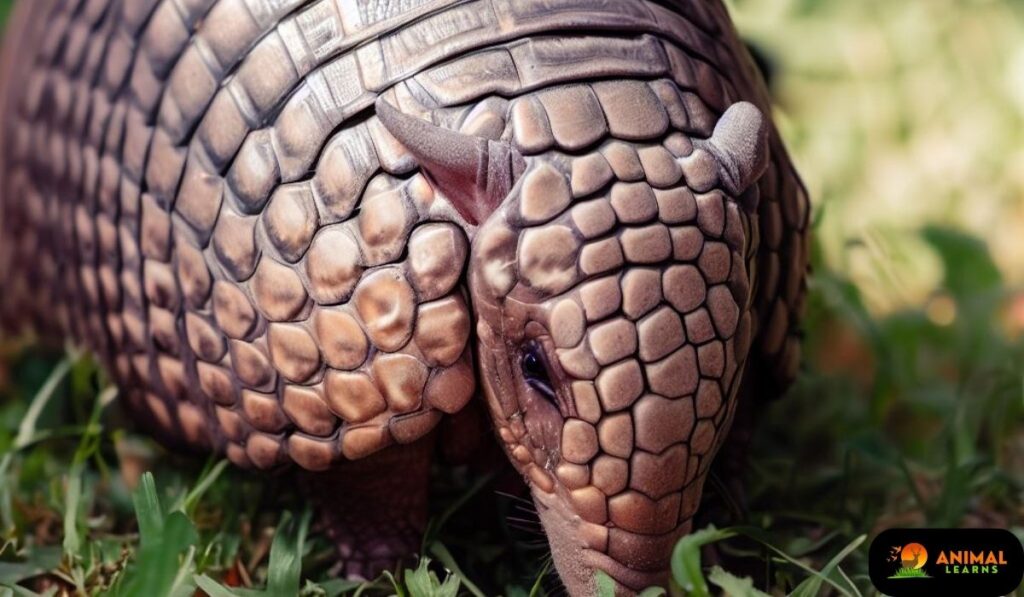
| Attribute | Information |
|---|---|
| Scientific Name | Dasypodidae |
| Type of Animal | Mammal |
| Skin Thickness | Varies depending on species, can be up to 3/4 inch (2 cm) thick |
| Where Found | Found mainly in South America, Central America, and the southern United States |
Armadillos have hard, bony skin covering their bodies, making them the animals with the thickest skin. Their skin is not thick like some animals, but it’s like armor.
Armadillos roll into a ball when they are scared to protect themselves from predators and bad things in their environment. Their armor allows them to stay safe from animals that want to hurt them.
Narwhal

| Attribute | Information |
|---|---|
| Scientific Name | Monodon monoceros |
| Type of Animal | Mammal |
| Skin Thickness | Up to 1 inch (2.5 cm) excluding blubber |
| Where Found | Arctic waters |
Often referred to as the “unicorns of the sea,” narwhals are identified by their long, spiral tusk, which is really an extended canine tooth on the top left side.
Their thick coat of blubber, which is essential for insulation in the icy Arctic seas where they live, is hidden behind their mottled grayish skin. The Canadian Arctic and Greenlandic seas are home to narwhals, who travel beneath sea ice there. They frequently descend quite far to get their prey, which includes fish, shrimp, and squid, in deep seas.
There are still many unanswered questions regarding the behavior of these enigmatic aquatic creatures, who spend strange lives beneath the ice. Because they live in social groupings and are essential to the sustenance and cultural practices of the indigenous populations, narwhals are valued creatures. But their ice home is being threatened by global change.
Rhinoceros Iguana
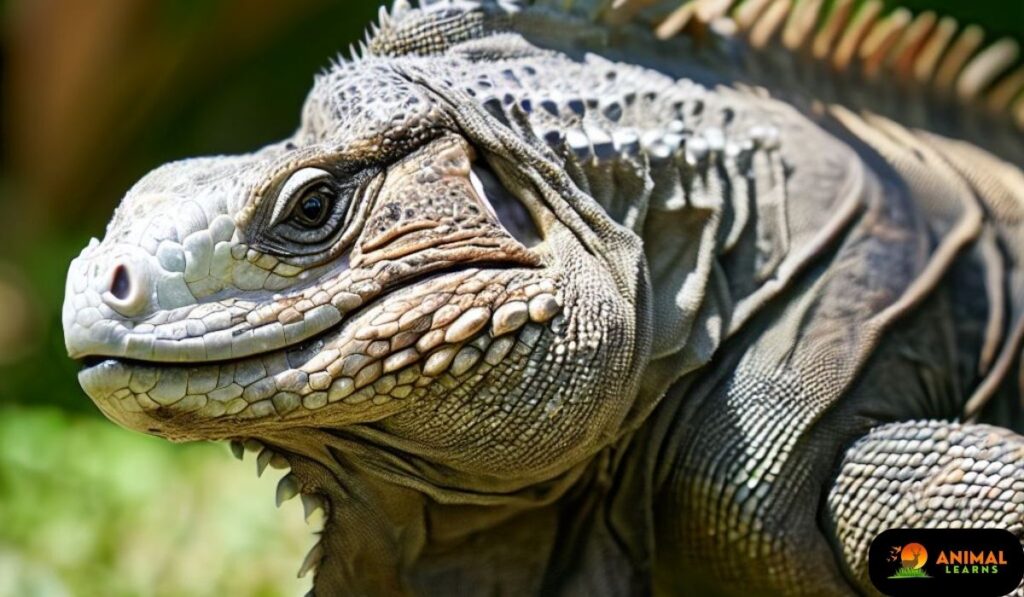
| Attribute | Information |
|---|---|
| Scientific Name | Cyclura cornuta |
| Type of Animal | Reptile |
| Skin Thickness | Varied, approximately 0.04 to 0.39 inches |
| Where Found | Hispaniola, primarily in rocky coastal areas of the Dominican Republic and Haiti |
Animals with the Thickest Skin like Rhinoceros Iguana (Cyclura cornuta) are a kind of lizard that has hard, rough skin with pointy scales that look like the horn of a rhino. That’s how it got its name. These things help it stay safe from animals that want to hurt it and from bad things in its place.
Rhinoceros iguanas mostly eat plants and live near the water in the Caribbean. They use their thick skin and pointy scales to protect themselves.
Harp Seal
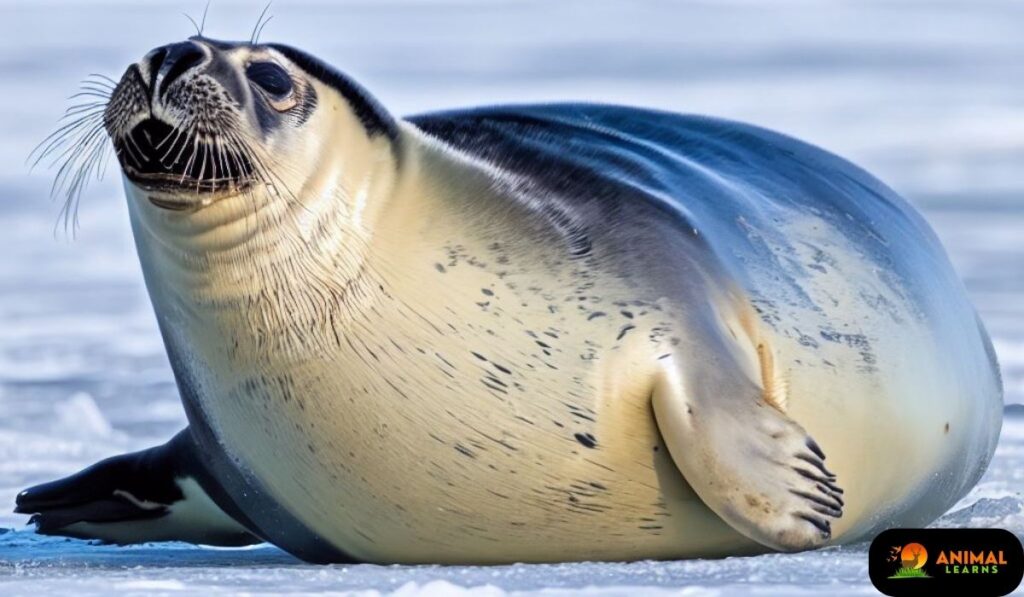
| Attribute | Information |
|---|---|
| Scientific Name | Pagophilus groenlandicus |
| Type of Animal | Mammal |
| Skin Thickness | Approximately 1 to 1.5 inches (2.5 to 3.8 cm), including blubber |
| Where Found | North Atlantic and Arctic Oceans |
Because of their distinctive harp-shaped pattern on their adult backs, harp seals are ideally suited to the frigid seas of the North Atlantic and Arctic. In these freezing conditions, their skin and a thick coating of blubber are essential for insulation.
They can withstand bitter colds and retain body heat because of this adaptability. Because pack ice mobility is necessary for their molting and breeding processes, harp seals are well-known for their seasonal migrations.
Social beings and harp seals are frequently observed in big groups. They consume a wide range of fish and crabs. The puppies, who have white, fluffy coats, are especially reliant on their mother’s high-fat milk to grow quickly.
Humpback Whale
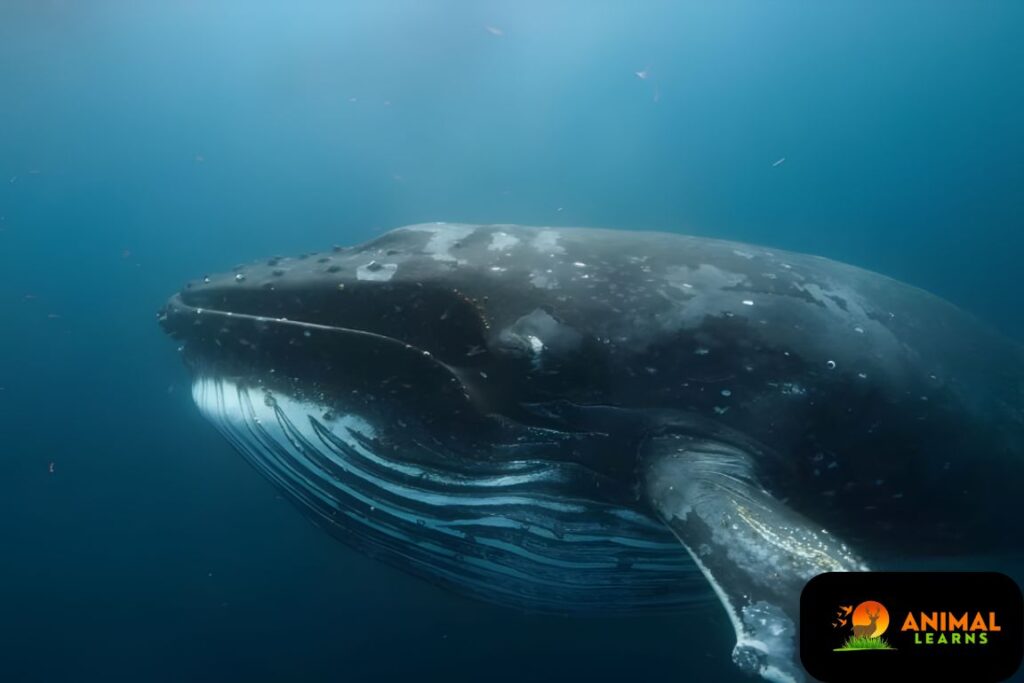
| Attribute | Information |
|---|---|
| Scientific Name | Megaptera novaeangliae |
| Type of Animal | Mammal |
| Skin Thickness | Up to 6 inches (15 cm) including blubber |
| Where Found | Oceans worldwide |
The humpback whale is a magnificent marine animal that is well-known for its remarkable size and graceful breaching. Its thick skin and the thick coating of blubber, which may reach up to 6 inches in thickness, are vital for insulation in chilly maritime conditions.
The great migrations of humpback whales, which take them thousands of miles from their feeding grounds in arctic seas to their breeding sites in tropical or subtropical waters, are well recognized. They are also well-known for their intricate and eerie melodies, which are thought to be important for mating and communication as they can be heard underwater over long distances.
Whale Shark

| Attribute | Information |
|---|---|
| Scientific Name | Rhincodon typus |
| Type of Animal | Fish |
| Skin Thickness | Up to 4 inches |
| Where Found | Tropical oceans worldwide |
The whale shark is the largest shark in the world when it comes to fish. Like whales, these sharks are referred to described as “gentle giants” and mostly consume plankton.
Their skin is around 4 inches thick (10 cm) and has a feel similar to hard rubber. It aids in shielding them from tigers, killer whales, and great white sharks, among other predators. The distinct pattern of dots on their skin serves as each shark’s unique means of identification, just like fingerprints do.
Honey Badger

| Attribute | Information |
|---|---|
| Scientific Name | Mellivora capensis |
| Type of Animal | Mammal |
| Skin Thickness | Approximately 6 mm to 8 mm (0.25 to 0.31 inches) |
| Where Found | Sub-Saharan Africa |
Honey badgers have extremely thick skin, around 0.25 inches thick, for their size. Compared to certain animals, such as buffalos, which are 50 times larger than them, it is thicker. They also have rubbery skin, which contributes to their resistance against arrows, spears, and machete blows without completely piercing them.
Their primary defense against the fangs of predators is their thick skin. Additionally, because it is rather loose, they may move around inside their skin to escape from predators or to retaliate while they are being pursued.
Crocodile

| Attribute | Information |
|---|---|
| Scientific Name | Crocodylidae family |
| Type of Animal | Reptile |
| Skin Thickness | Up to 0.5 inches (1.3 cm), but very tough |
| Where Found | Africa, Asia, the Americas, and Australia |
The armored skin of crocodiles is well-known, consisting of strong scales and bone plates known as osteoderms. Its tough, thick skin offers superior defense against environmental factors and predators. In their natural environments, crocodiles are the top predators and are renowned for their strong jaws and cunning hunting techniques. They are essential to keeping their ecosystems in balance.
With millions of years of existence, crocodiles have demonstrated remarkable evolutionary resistance. They are prominent in mythology and folklore and have cultural significance in many areas. Different species have different conservation statuses, but the main concerns are habitat loss and human conflict.
Camel

| Attribute | Information |
|---|---|
| Scientific Name | Camelus spp. |
| Type of Animal | Mammal |
| Skin Thickness | Varies, can be up to 1 inch (2.54 cm) or more |
| Where Found | Arid regions of Asia and Africa |
Animals with the Thickest Skin” include camels, whose skin is an amazing adaptation to the harsh desert conditions they live in. Their skin is thick and rough, which shields them from the burning sun and also helps them fight off desert predators and sandstorms.
Camel skin’s special texture helps them control their body temperature, so they can handle the big changes between hot days and cold nights.
Also, the camel’s skin is flexible and strong, which helps them save water by reducing how much they sweat. This amazing skin adaptation shows how camels are very tough and can live in some of the hardest places in the world.
Why Do Some Animals Have Thick Skin?
Thick skin is among the many fascinating adaptations seen in the animal realm. Thick skin has developed in several species, and knowing the causes of this adaptation helps us understand how animals live and prosper in their natural habitats.
An animal’s capacity to control its body temperature can be significantly influenced by the thickness of the skin. Thick skin and fat assist marine creatures like whales and seals in maintaining body heat in chilly ocean conditions. Their survival in cold conditions depends on this insulation.
Protection is one of the main purposes of thick skin. Many animals use their thicker epidermis as a defense against parasite illnesses, environmental dangers, and predators. For instance, an elephant or rhinoceros’ hardy hide shields them from sharp objects like thorns and rough foliage while also making it more difficult for predators to harm them.
Animals with the thickest skin can better retain water and avoid dehydration in dry settings. In environments with limited water supplies, this adaptability is essential for survival.
Thick skin and underlying fat can help aquatic creatures stay buoyant, which improves their ability to swim and float. Since they spent their whole lives in the water, huge marine animals especially need this adaptation.
Conclusion
This article shows how “Animals with the Thickest Skin” demonstrates the amazing ability of life on Earth to adapt. Their skin is thick and tough, which helps them defend themselves from enemies and harsh conditions. It also reveals the different ways that evolution has shaped them to survive.
The animal world has many kinds of skin adaptations, from elephants to pangolins. These animals remind us of the complex web of life and why we should protect their homes to keep the ecosystem in balance. By learning about these amazing animals, we can see why it is important to care for the natural world for the sake of future generations.
FAQs
What is a very large animal with thick skin?
The African Elephant is a very large animal known for having exceptionally thick skin.
What animal has the thinnest skin?
Dolphins are known to have some of the thinnest skin among animals.
What are Animals with the Thickest Skin?
Animals with the Thickest Skin are creatures known for their exceptionally thick and resilient hides, which serve as a protective adaptation.
Which animal has the thickest skin in the world?
The African Elephant, specifically the African Savannah Elephant, is renowned for having the thickest skin among land animals.
Why do some animals have thick skin?
hick skin serves as a defense mechanism, protecting animals from predators, harsh climates, and environmental challenges in their habitats.












